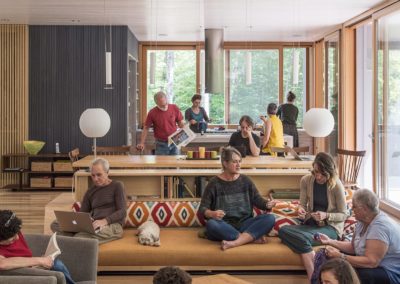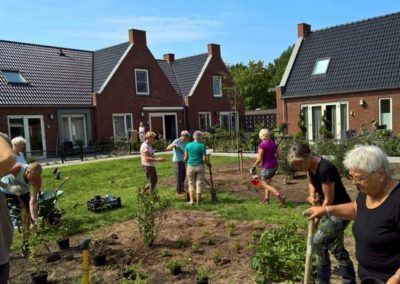Living, Building & Energy

“Trying to be happy by accumulating possessions is like trying to satisfy hunger by taping sandwiches all over your body.” – George Carlin
The way we live, the space we occupy and the materials we use in and outside the house, are all interconnected. They have a big influence on our happiness and the environment. So how can we live and use energy in our buildings more simply?
Less space, more living
The more space we take up, the more resources we use. The average floorspace per person in Switzerland is 46m2. Higher than the EU- average of 42.6m2.
More and more people are waking up to satisfaction of smaller spaces. Clever design meets social responsibility, resulting in less waste, lower bills and more time to do fun stuff.
Living
There is not just the “tiny house movement”; there are many ways to live happier with less. For example:
– House concepts that have shared spaces for people: a kitchen, a garden or a playroom.
– Minimalism: getting rid of all things that you don’t really need (or love, as Marie Kondo says)
– Communal living: although not for all, people help each other out a lot.
By using spaces more efficiently, using height, using durable materials there is a lot you can do also within your own house or appartment. This way you can create multi-functional spaces, or free spaces for new types of use. By rethinking the furniture and appliances you can create a new relaxed feeling, with durable equipment. Furniture for example.. in most cases refurbished high-quality couches or chairs, can last more than cheaper furniture, and they are more timeless too!
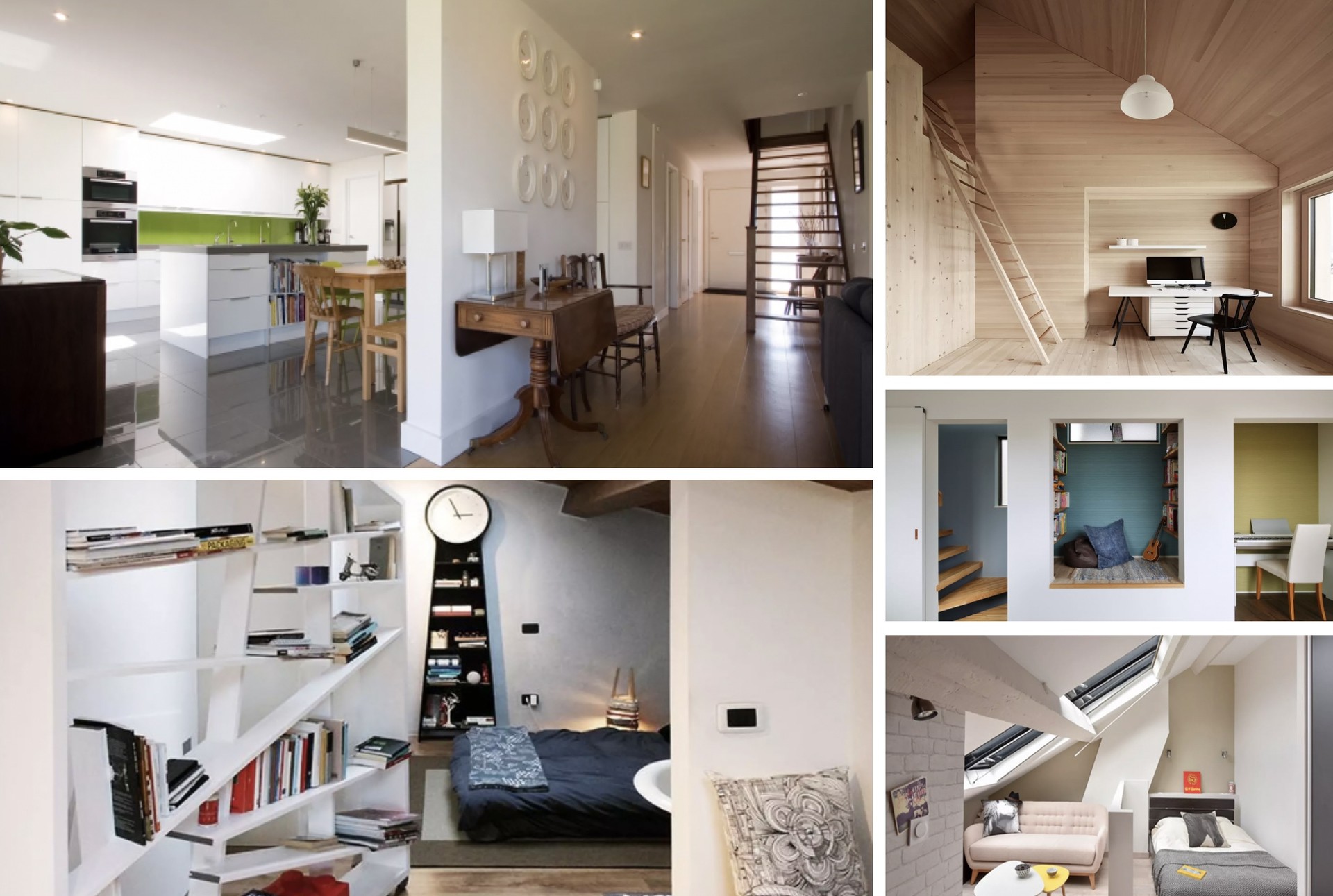
Smaller living in most cases means living more together. You share spaces, help eacht other. Or in other cases it means being able to live closer to nature. Also that has its advantages of course.
Below some examples of different shared living concepts that are on the rise. Especially also for the elderly it is interesting to live together with others, from the same or younger generations.
Building
When you have the opportunity to move, but also to build or rebuild a part of a building, there are nowadays many cool sustainable options, that are also have a more cosy and welcoming feeling and of course save costs, so that you can spend more time on the things you love.
For example buildings from wood, or new, more comunal projects, such as “Kalkbreite” in Zürich or “Erlen” in Basel, and here you see the (single) house of the future.
On the long run these options bring you and the environment a lot.
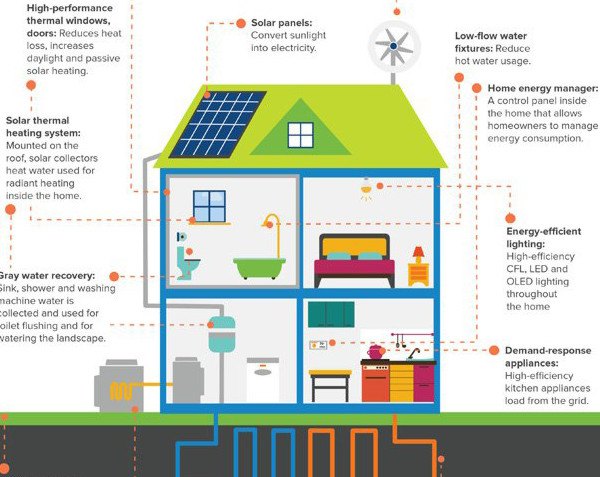
What can you do (also) as a tenant?
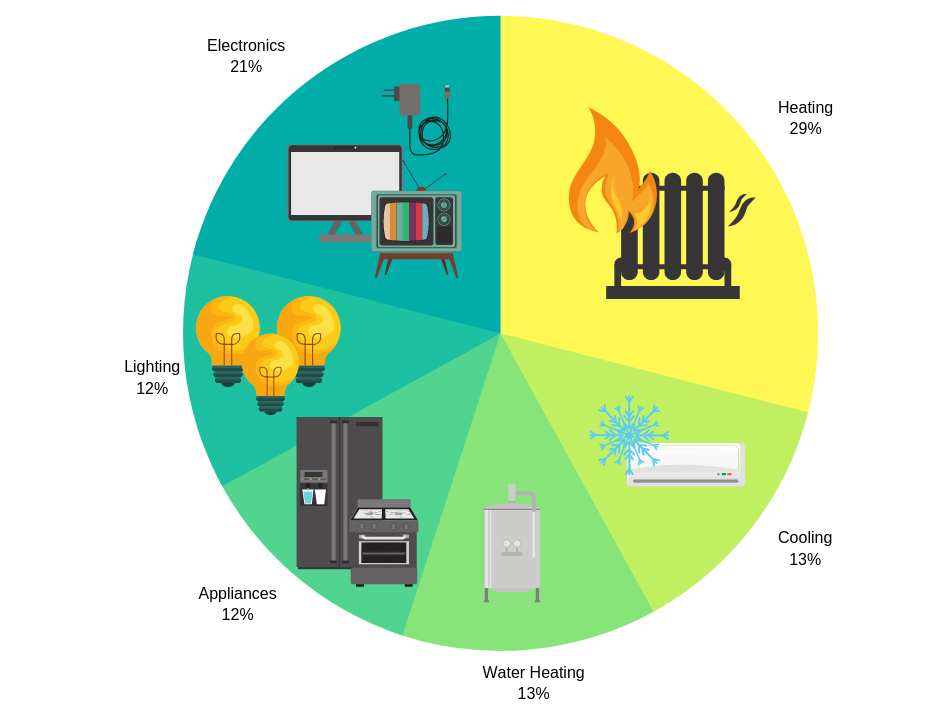
Here you see how much energy is being used in your house.
- Repair and reuse high value items like smartphones and computers instead of replacing them as they are very resource-intensive to produce and difficult to dispose of
- Consider replacing old household devices, if the new (and more energy efficient) device will be used very often. Examples are inefficient freezers, air conditioners, washing machines, lighting and heating systems.
- Write a letter to your landlord to suggest the installation of an environmental friendly heating system. You can also asked to be individually charged based on your personal energy use, rather than paying the standard heating costs usually calculated per square meter.
- Turning your heating down with 1 degree saves 2-3% of energy. A bedroom at 16-18C is perfect.
- Get rid of your dryer and wash at low temperatures. Hanging out your laundry might take you 10min, but like a lot of “do-it-yourself” things, activates you and satisfiest you afterward.
- Choose your energy supplier and products with care, there are lots of green options available.
Many of these measures help you to reduce energy, hence resources in a rather simply way and helps you save money that you can use in other positive ways!


